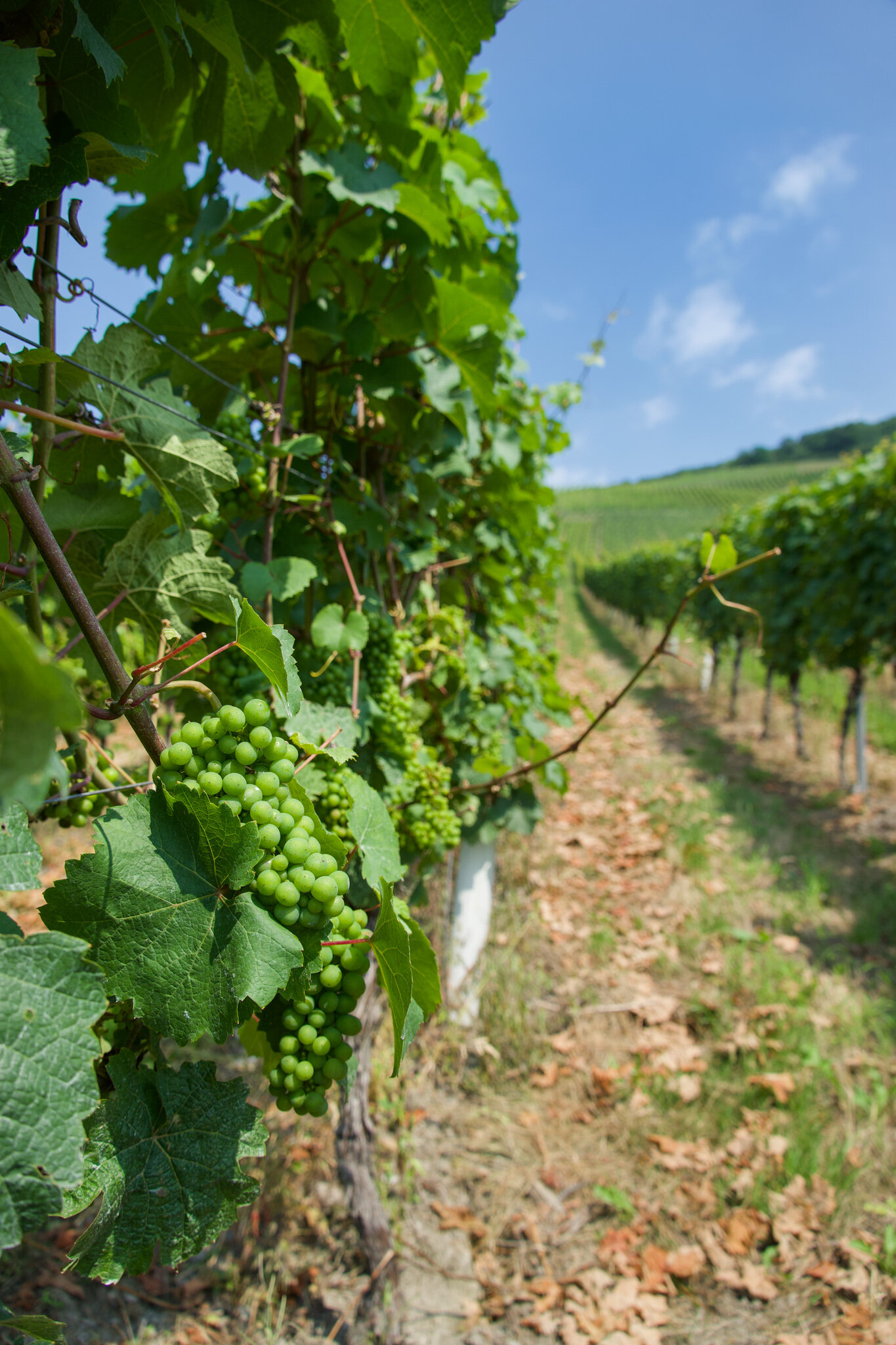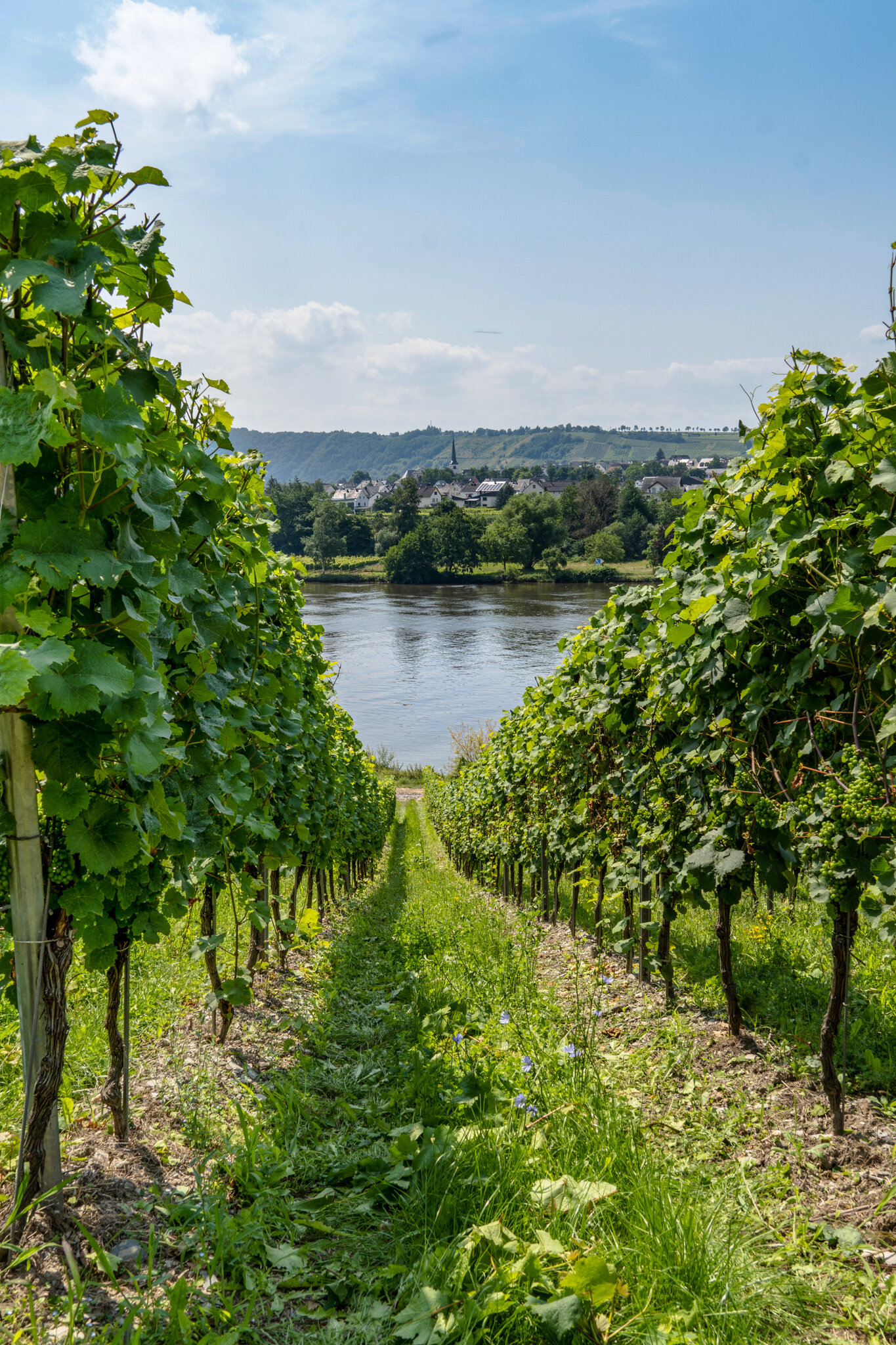Riesling: What's the Misunderstanding?
Let's talk about Riesling
On returning from our wine travels to Germany, I've been thinking a great deal about why I feel compelled to champion this grape. Sure, there is a bit of rooting for the underdog. After all, I did attend Washington State University, which only makes it to the top of the Pac-Twelve football standings once every half-century. However, we aren't short on spirit and why since 2003, we've been showing up every weekend waving our flag on ESPN's College GameDay. So, yes, you can say it runs in my blood to root for the underdog.
It's why when we traveled to Alsace (where I first fell in love with Riesling) I was happy to praise what felt like a French wine region that was always an afterthought. First, you have Burgundy and Bordeaux; then there's Champagne, the Loire, Provence; heck, even the French forget about Alsace. I do find myself cheering for other excellent and under-appreciated regions, like Campania in Italy. And lesser-known grape varieties like Vermentino or Barbara which don't get enough recognition.
This thought process leads me to believe Riesling is more than an underdog; it might just be the most misunderstood grape of considerable consequence. It's the most planted grape in Germany, cultivated in all 13 of their wine regions, and Germany provides the world with 40% of Riesling's overall production. We are talking about the most significant grape of an ENTIRE country.
So, I decided to delve into what's behind this misunderstanding. First, of course, there is the misconception that all Riesling is sweet. Now I'm of an age where I have firsthand knowledge of how this all started. As someone who came of drinking age in the eighties in America, I can remember drinking sickling sweet wines, one of which happened to be very bad Riesling. However, I'm not sure how this continued to perpetuate long after these wines were off the shelf. I can get together with my girlfriends, who will always pick the Chardonnay or maybe a Sauvignon Blanc from the wine list, and I might be able to persuade them to try an Alberino or a Gavi, but the minute I say Riesling it's, "no way, that's too sweet."
For those not fortunate enough to drink those wines 😉 I can only believe it's a misunderstanding of how Riesling is produced, which is to garner a full spectrum from dry to sweet wines, and then a lack of understanding on how to tell the difference. I know I didn't fully understand (and appreciate, but we'll get to that later) how to tell the difference.
When I use the term produced, in Riesling’s case, I mean harvested. If we use Chardonnay as an example, for the most part, it's harvested in the same fashion around the world, a one-time picking. It's manipulated in the production process to achieve its varied tastes beyond its terroir. On the other hand, German Riesling uses multiple harvests, up to five, to achieve its variations in style. The timing of these pickings, and thus the condition of the grape when harvested, make this single grape from the same vineyard widely different.
It's both a blessing and a curse
A curse because if you don't understand these German terms, Kabinett, Spätlese, Auslese, Beerenauslese, and Trockenbeerenauslese, which refer to the ripeness level of the grape when picked. Or the words, Troken, Halbtroken, and Feinherb, which describe the dryness level; you've inevitably had widely different experiences tasting Riesling.
Even if you understand Spätlese means "late harvest," you might then assume it's sweet. And this is where the Riesling grape throws us another twist, its acidity level. Because the acidity level of the Riesling grape is so high, this late harvest wine can still be Troken or dry.
It's the acidity that made me fall in love with Riesling in the first place. I tend to enjoy a wine that is high in acid. So, when I tried a young, troken Riesling, I was hooked. Not everyone wants that mouth-watering acidity, and that’s where aging and sugar levels come into play. After tasting my way through German Riesling, I learned it’s this balance, or interplay, between the acidity and the sugar that is the blessing. I went there thinking I only like dry Riesling and came home understanding none of them are sickling sweet, and many of those that were off-dry were, in fact, astounding and landed a spot in our suitcase.
I now have a better understanding of why sommeliers love Riesling; you can find a Riesling to pair with almost any dish. We experienced this firsthand when we went to Rutz in Berlin. Most people go to a Michelin-starred restaurant and partake in the wine pairing to try the best wines from around the world. We, however, had gone to Germany to learn and experience German wines. So, we asked our sommelier to pair our dishes with only German wines. It was this experience that showcased the true complexity and diversity of Riesling. Each one was different, and each paired perfectly with the outstanding food. Oh, and guess what, not a troken (dry) in the mix. So, for someone who has stated, “I only like dry wines,” I’ll be plating myself a healthy serving of crow. (Read more about our culinary and wine experience)
What's my conclusion on how to overcome these misunderstandings about Riesling and get more and more people to try?
Sure, better labeling with terms or indicators of dryness level may benefit. But I don’t believe marketing labels is the end-all solution.
There needs to be more reach to everyday wine consumers. Hopefully, more Riesling production in the US, in areas like the Finger Lakes and Washington State, will help get more Riesling on grocery store shelves or at least beyond high-end wine shops and restaurants.
Not only do we not see enough Riesling, but there is also an issue of the mix, or lack thereof, in dry, off-dry, and sweet. Although a small sampling, in our recent travels to Georgia and South Carolina, every Riesling on the wine list was on the sweet side. I understand the desire for sweetness in states that drink sweet tea, but a little diversity wouldn’t hurt. Even in the big wine store chains, options to showcase the differences in style don’t exist, and often they will be sweet. This variety comes down to the selection by our importers, which seems to be making a shift, but maybe some encouragement could go a long way. There is plenty of excellent dry Riesling, at very affordable prices, especially in regions like the Mittelrhein.
Then it's education. Sommeliers are doing their part by promoting and suggesting Riesling to their diners. With help from sponsors and winemakers, importers could do more to support education in terms of tastings beyond the sommeliers. And we Riesling lovers need to convert people every opportunity we have to share wine.
I’m certainly up for doing my part to share our learnings and the wines we discovered in our wine travels to Germany, the birthplace of Riesling.




